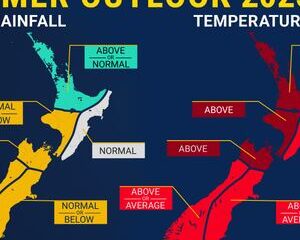Business
Aging Population Will Transform Banking and Investment Practices

The Reserve Bank of New Zealand (RBNZ) has released a report highlighting significant changes in banking and investment behaviors as the population ages. The bank stresses the need for the financial industry to prepare for these long-term shifts, which may introduce new risks to the financial system.
According to co-author Enzo Cassino, over the next 25 years, the demographic changes are expected to result in higher savings and altered investment patterns. These shifts will likely impact interest rates, bank lending, and the insurance sector. Cassino noted that there will be a decreased demand for housing loans as older individuals gravitate towards lower-risk investments, such as term deposits.
“Overall, we think there will be lower demand for housing loans and higher deposits as older people seek to hold more in safer investments,” Cassino explained. “This will affect the business models that banks are currently utilizing.”
The report also forecasts a similar impact on the insurance sector, predicting an increased demand for health insurance and a reduced need for life insurance. This trend toward increased savings is expected to place upward pressure on interest rates and elevate the value of assets like housing and shares.
Implications for Financial Institutions
The anticipated demographic shift may prompt banks to redirect lending strategies towards other sectors. With an increase in domestic savings and capital sources, institutions could find themselves borrowing less from overseas. Cassino aims to alert banks and financial businesses to the potential changes and their implications.
“We want to encourage banks and other financial institutions to consider how an older population will impact their business model over the coming decades,” Cassino stated. “The greatest risk may be that these institutions are not preparing for these changes and how they will affect them.”
Despite the significant changes outlined in the report, Cassino emphasized that the RBNZ is not raising alarms regarding financial stability at this time. The report will be included in the upcoming RBNZ Financial Stability Report, set to be published in November.
The findings serve as a wake-up call for financial institutions to adapt to a rapidly aging population and the consequent shifts in consumer behavior, ensuring they remain resilient and responsive to future challenges.
-

 World1 week ago
World1 week agoPrivate Funeral Held for Dean Field and His Three Children
-

 Top Stories2 weeks ago
Top Stories2 weeks agoFuneral Planned for Field Siblings After Tragic House Fire
-

 Sports3 months ago
Sports3 months agoNetball New Zealand Stands Down Dame Noeline Taurua for Series
-

 Entertainment3 months ago
Entertainment3 months agoTributes Pour In for Lachlan Rofe, Reality Star, Dead at 47
-

 Entertainment2 months ago
Entertainment2 months agoNew ‘Maverick’ Chaser Joins Beat the Chasers Season Finale
-

 Sports3 months ago
Sports3 months agoSilver Ferns Legend Laura Langman Criticizes Team’s Attitude
-

 Sports4 weeks ago
Sports4 weeks agoEli Katoa Rushed to Hospital After Sideline Incident During Match
-

 World2 weeks ago
World2 weeks agoInvestigation Underway in Tragic Sanson House Fire Involving Family
-

 Politics2 months ago
Politics2 months agoNetball NZ Calls for Respect Amid Dame Taurua’s Standoff
-

 Top Stories2 weeks ago
Top Stories2 weeks agoShock and Grief Follow Tragic Family Deaths in New Zealand
-

 Entertainment3 months ago
Entertainment3 months agoKhloe Kardashian Embraces Innovative Stem Cell Therapy in Mexico
-

 World4 months ago
World4 months agoPolice Arrest Multiple Individuals During Funeral for Zain Taikato-Fox




















